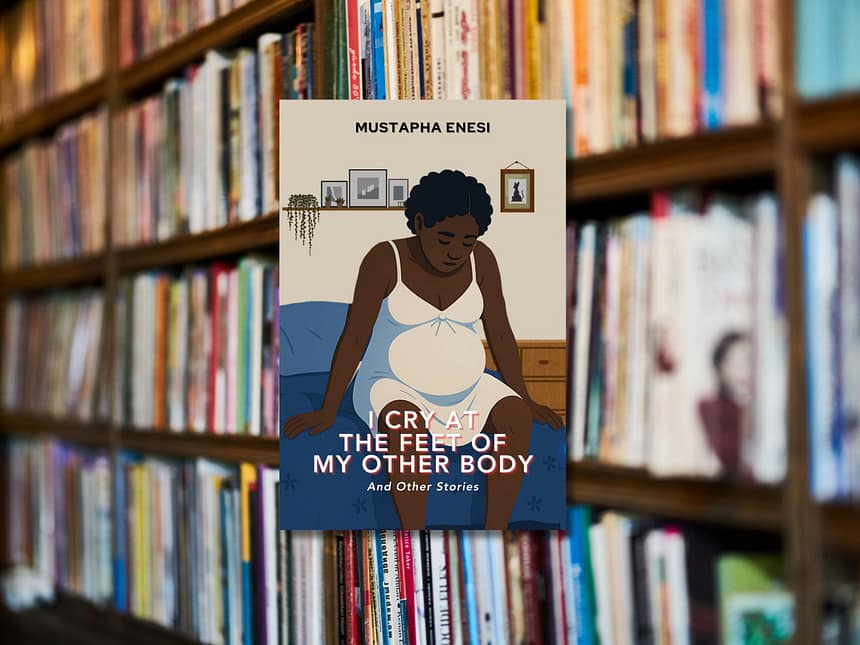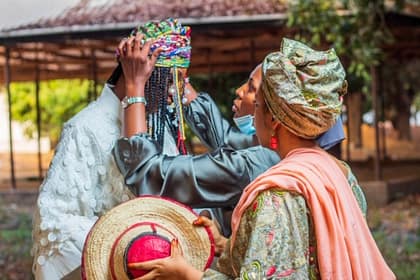In his striking debut collection, I Cry at the Feet of My Other Body and Other Stories, Mustapha Enesi turns his sharp eye to the lives of Nigerian women—mothers, daughters, wives, would-be mothers—whose private struggles play out against the weight of tradition, faith, and social expectation. From the dust-choked streets of Yaba and Ikoyi to the hushed interiors of a Lagos hospital, from the leafy compound of a coastal village to the austere walls of St Philomena’s Church of God in Kuve, his stories are as much about place as they are about people. Across twelve tales, Enesi’s prose moves fluidly between the lyrical and the wry, conjuring vivid landscapes both external and interior.
At the heart of the collection lies a single, compelling preoccupation: what it means to be a woman in a world that measures her worth by her capacity to bear and nurture life. In “One Good Thing,” a sixty-two-year-old former lecturer, Mrs Silifa, reels from the shock of a false pregnancy—an event that fractures her identity as she negotiates a late-life affair and strained ties with her grown daughters. Meanwhile, “Safety Pins Are Good Omens” follows a young Muslim wife’s agonised prayers and ritual ablutions in the hope of conceiving, only to face the devastation of stillbirth and the wrenching decision that follows.
There is anger here, too. Sharp, righteous and often bitter. In “Doctors from Lagos,” Simbi, newly diagnosed with cancer, lashes out in public frustration at a translator who denies her free medical care, her rage rooted in the grinding injustice of systemic neglect. And in the title story, a village ritual of palm-reading becomes a daughter’s recollection of her mother’s uncanny gift. When a desperate young mother, Obiageli, pleads for this ritual to save her dying baby, the reader glimpses a magic both maternal and merciless, handed down through generations.
Enesi’s style is supple: sentences that pivot from staccato instruction (“Head to Okey’s shop … but please, don’t go in your blue shoes”) to rich, elegiac passages that echo long after the page is turned. He is especially adept at capturing intergenerational tension: the old guard’s solemn warnings against youthful exuberance; the daughter’s refusal to braid her hair or accept the “proper woman” mould; the uneasy alliances between co-wives, and between aunties, grandmothers and the girls they strive to protect.
The twelve stories unfold almost like a cycle of life and loss. The book opens with “Shoes,” a tender, if admonitory, mother-daughter address, and closes with “The Parties at Marigold Hospital,” an eerie, surreal piece where patients dance through hospital corridors as though celebrating life’s ending. In between, vignettes such as “Mrs Coker and the Headless Masquerade” (a haunting meditation on grief and spectacle) and “What Has Happened Has Happened” (a blistering account of repeated miscarriage and the doctor’s clinic as confessional) probe the fragile terrain of female agency under duress.
The collection is at its strongest when the ordinary fractures into the uncanny: an abandoned infant on Sister Felicia’s doorstep whose naming inaugurates the Ministry of Happiness, a place of both refuge and indentured labour; the memory of a mother’s wrapper, scented with loss, that sustains a child through orphanhood. These surreal inflexions invest even the most grounded narrative with an almost mythic charge.
If one fault might be found, it is that certain characters—particularly the male figures—remain sketches rather than fully realised presences, serving more as catalysts for women’s stories than as actors in their own right. Yet this, too, may be deliberate: Enesi is resolutely centred on his heroines’ interior lives.
Ultimately, I Cry at the Feet of My Other Body is a modern Nigerian book in the best sense: unflinching in its examination of gendered violence and vulnerability, yet alive to the small mercies of resilience, ritual and solidarity. Like a griot weaving story and song, Enesi shows us that, for many women, the body is both battlefield and sanctuary—and that whatever other stories they must tell, the one they return to again and again is the story of survival.








